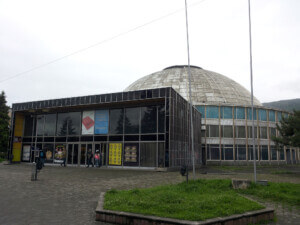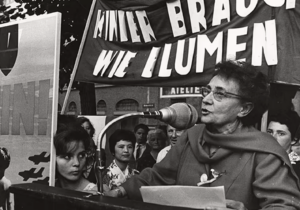At the age of 26, eight years after I had left the comfort and safety of my parents’ mid-90s brick-and-vinyl ranch, I moved into my first apartment with central air conditioning. For many of us in the United States, central air is a given—a background whisper to contemporary life, acknowledged only when it stops working and when the monthly bills come around. For me, it was a luxury, a sign that I had made it to a long-delayed adulthood. Gone were the days of renting dingy apartments in broken-up old houses, fighting against the elements with wet towels, box fans, ice packs, and loud, precariously secured window units whose filters always needed to be vacuumed out. It was as if I existed in my own bubble of suspended economic development, enviously waiting for that promised land of modernity, of careless, 72-degree comfort.
Despite my environmentalist and leftist bona fides, I unquestionably submitted to central air, that ultra-conservative symbol of American stability, prosperity, and the pursuit of comfort. Clearly, air conditioning conditions. Indeed, it’s how it managed to dominate and supersede (with planetary consequences) a wide variety of interesting and sustainable architectural alternatives devised during a then-maturing modernism in the 1930s through the end of the 1950s. This is the subject of Daniel Barber’s Modern Architecture and Climate: Design before Air Conditioning (Princeton University Press).
Air conditioning, historically speaking, has consistently been presented as one of the galvanizing moments in the development of architectural modernism. It was what made possible the quietude of Howe and Lescaze’s 1932 Philadelphia Saving Fund Society Building, hailed by historian Emily Thompson as a landmark of acoustical engineering and the merging of architectural and sonic modernity, and the reified, endless glass expanses of Eero Saarinen’s 1955 General Motors Headquarters and Mies van der Rohe and Philip Johnson’s 1958 Seagram Building that became the pace setters for an emerging corporate modernity that persists to this day. The always sardonic Reyner Banham, tired of this pat narrative, offered the following comment in 1969’s The Architecture of the Well-Tempered Environment: “As the progress of Le Corbusier’s thinking shows, it would have been necessary to invent air-conditioning around 1930 had it not existed already.”
As if to do Banham one better, Modern Architecture and Climate opens with the highly developed shading devices used to mitigate light and heat in Le Corbusier’s unbuilt Barcelona Lotissements from 1931. The premise of Barber’s book is this: The battle for the supremacy of air conditioning above all other solutions for climate mitigation was, in fact, a battle. The conflict drew in some of the most powerful entities of the interwar and post-war period, from architectural luminaries like Le Corbusier and Richard Neutra to House Beautiful and even the US State Department. The period from 1930 to 1960 was one of contested space, rather than a linear progression from the invention of a technology (air conditioning) to its ubiquitous adoption, and the battle outlined by Barber spanned continents, political ideologies, and architectural discourses. In doing so, this history upends many of our perceptions of the politics of climate mindfulness, and the legacies of architectural fountainheads.
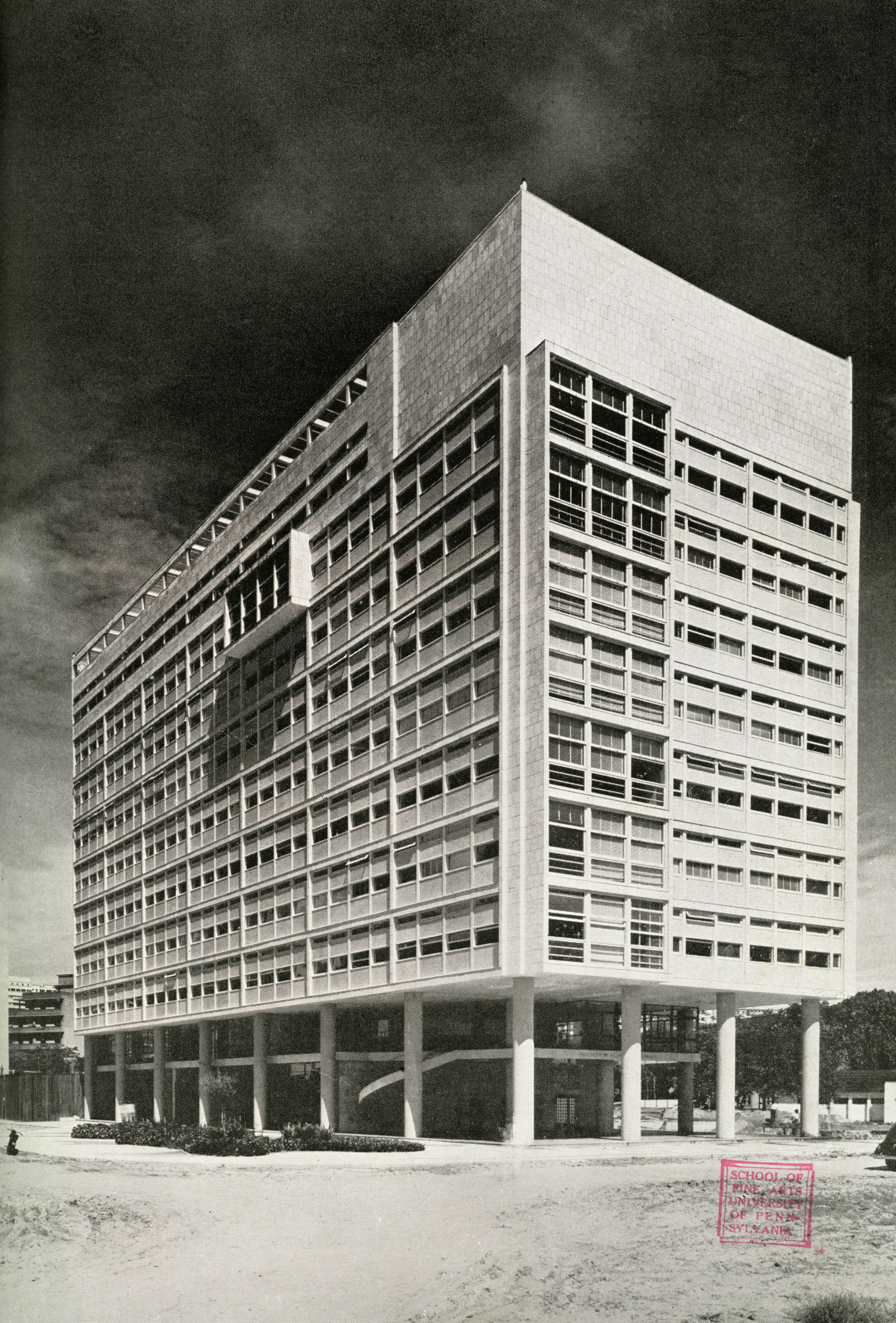
Having emerged from the confluence of economic, scientific, and material developments, modernism offered technical solutions to human ills, not least of which was the unpleasantness of extremes in temperature. It was completely in line with the “forward-looking” thinking of the time, then, to propose an architectural solution to a problem as big as the climate. According to this phenomenon, what we might call “climate modernism,” architects the world over quickly fastened onto shading devices and other climatic solutions that were later codified by the Olgyay brothers at Princeton. What makes Barber’s book so interesting is not only the meticulous documentation of these climate-control alternatives and their practitioners (he goes out of his way to give the Olgyays their due), but the tension between their goals and their underlying ideologies.
We would like to believe that environmentalism and sustainability are inherently liberal, humanistic goals. Indeed, in our current moment of media and political polarization, they are explicitly presented as liberal ideas. However, the early modernist aims of climate control, despite being cultivated through more sustainable architectural (rather than mechanical) means, were cloaked in a variety of ideologies that were at best technocratic and at worst imperialistic.
Barber himself cautions against casting these early developments in the role of a proto-environmentalism. As he suggests in a passage on Le Corbusier, “the project of modern architecture broadly construed was to engage with and rearticulate the complexity of issues we now address as ‘the environment.‘” At the core of Le Corbusier’s experiments with brises-soleil and louvered shades was ultimately the modernist goal of normativity, both functionally and culturally—of a universal space, which, thanks to the development of new architectural ways of mitigating heat and light, could be adjusted and expanded at a global scale. (The underlying ideological implications of this quest for Western, masculine normativity are obvious.)
Even more of a political mixed bag was the development of shading devices in 1940s Brazil and their inherent geopolitical and corporate underpinnings that span not only architecture but regime change in a developing country. Barber takes as an example the Ministry of Education and Health (MES) building designed by Lucio Costa, Carlos Leão, Jorge Moreira, Oscar Niemeyer, Affonso Reidy, and Ernâny Vasconcelos (with contributions from Le Corbusier himself) in 1936. Perched high on pilotis, the 15-story building features alternating facades—an egg-crate containing banks of operable louvers meets the bracing sun, while a more permissive open pan de verre admits indirect light.
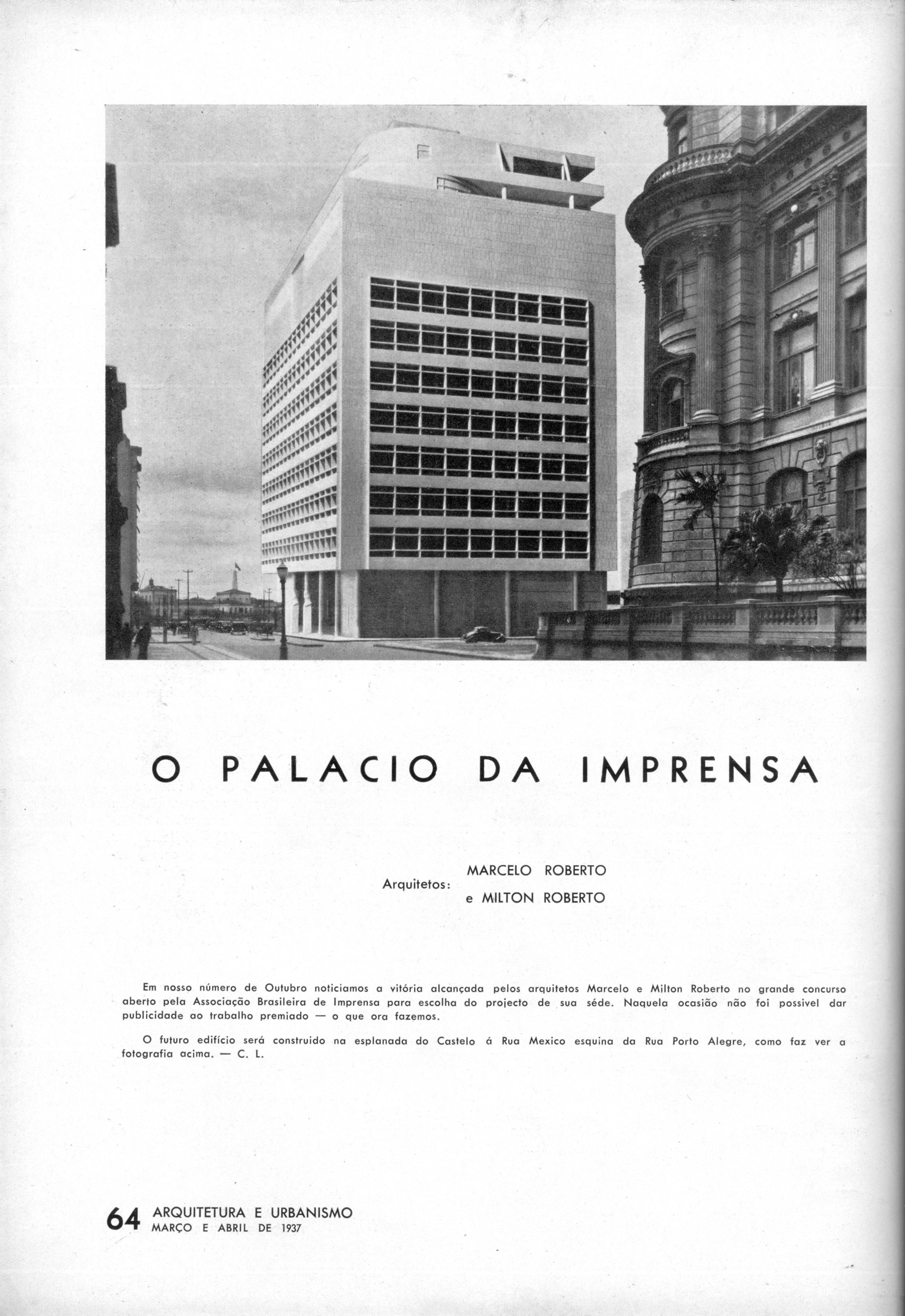
The MES itself (the government agency) was the product of the 1930 political coup that Brazilian politician Getúlio Vargas instigated alongside the army to dispose of the democratically elected president on anti-communist lines. Vargas’s conservative and centralized government, called the Estado Novo (new state), sought to transform Brazil into a modern capitalist country and tasked newfangled state bureaucracies with raising the standard of living, managing the population, directing industrialization efforts, and instituting cultural and economic reforms.
It’s curious that architectural modernism, which at the time was still seen as politically progressive, was chosen to express such an authoritarian regime. But for Barber, the new architecture habituated Brazilians to the new regime in an instance of “people conditioning,” or subject formation, that generally attends periods of “economic and political disruption as social and economic systems are changing, globalizing, and accommodating themselves to new flows of resources and capital.”
Such experiments in modern statecraft, Barber notes, were part of a larger geopolitical shift away from direct colonial control towards a postcolonial condition of capital investment and Third-World interventionism. Architectural modernism (and climate modernism in particular) was central to achieving this aim, Barber writes:
One hallmark of this period was a changing role for governments and nongovernmental organizations (NGOs), as colonial relations of direct power turned to postcolonial conditions of economic and cultural influence. The built environment took on an even more profound role in the material construction of these new regimes and in their symbolic expression. Again, the façade was an essential mediating agent in this historical transformation. It embodied a system for climatic mitigation that offered to make the planetary interior a space of health and comfort; it also was often deployed as a symbolic screen on which countries and corporations could claim sensitivity and openness to local conditions. A filter, a billboard, and a mask.
The US State Department harnessed these contradictory effects in its ambitious embassy building program, which enlisted some of modernism’s most famous names including Edward Durell Stone, Richard Neutra, Walter Gropius, and Eero Saarinen. The buildings they designed made extensive use of semi-porous sculptural or decorative envelopes, which, Barber contends, betrayed the shift in American foreign policy during the Cold War towards covert operations. Seemingly innocent architectural ephemera, then, worked to shield the outcomes of these ops—usually, the brutal overthrow of leaders and movements across the developing world. “At risk of collapsing into conspiracy theory,” Barber writes, “it is hard not to see these carefully shaded structures as operating across these general diplomatic and clandestine terms, selectively allowing access both inside and outside. The façade served as a charged plenum in the cultural, diplomatic, economic, and political relations between two countries—and possibly had some beneficent shading effects as well.”
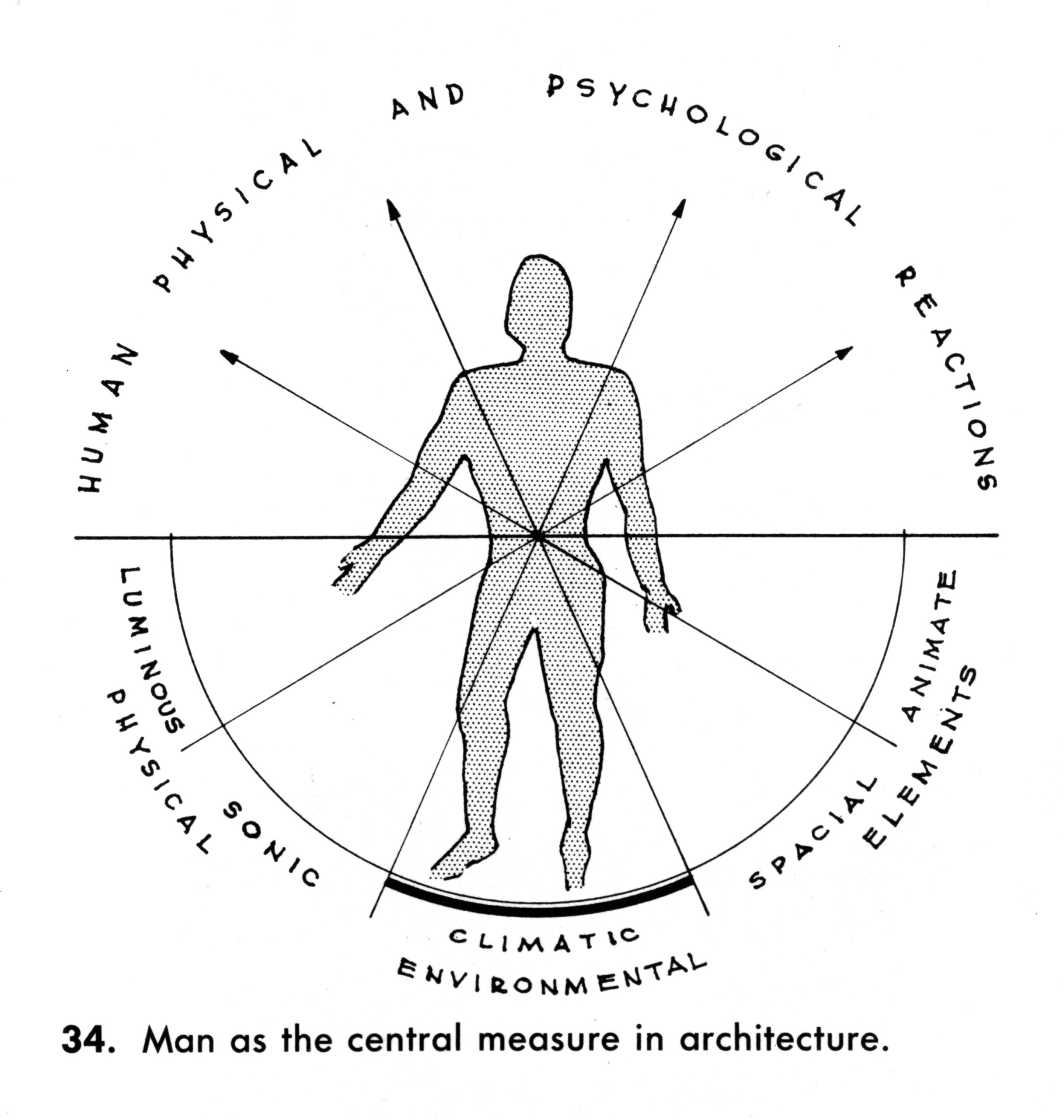
Within the architecture field, this mounting expertise was focused on “reduc[ing] reliance on heating fuel and electricity for cooling” and the establishment of comfort to “ameliorate living and working conditions to make them more restorative or productive.” This short-lived period of innovation, however, soon ran up against what is now called the Great Acceleration, the economic expansion and increasing reliance on fossil fuels that formed the backdrop of the rest of the 20th century. An excellent example of this transition is the Climate Control Project, a joint initiative between House Beautiful and the American Institute of Architects, which aggregated climate data about specific regions within the United States and proposed a home designed around each region’s exploitable natural resources as well as their macro- and micro-climates.
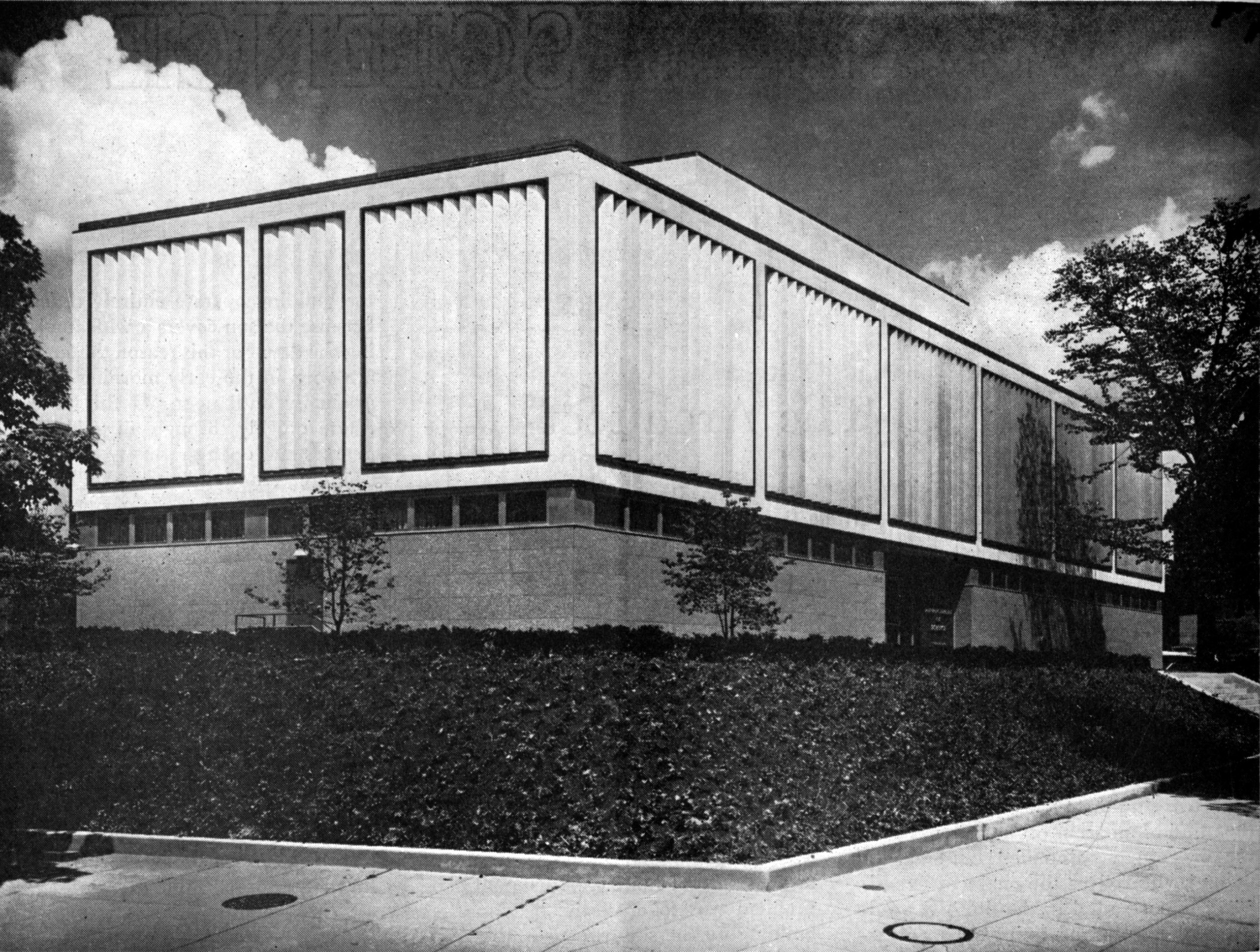
The subject of the CCP was the suburban home, which enabled the project’s new forms of diagrammatic communication to uniquely straddle the concerns of science, architecture, and consumer desires. At its core sat House Beautiful editor Elizabeth Gordon, who advanced a tasteful, Wright-esque, distinctly American modernism she felt reflected the needs and wants of consumers at a time of changing norms of American consumption. Architecturally managed climate control, here rendered at the scale of the house, promised languid serenity, comfort, privacy, and complete thermal control—all wrapped up in a colorful display of awnings and courtyard gardens communicating American social mores and ideas of good living. Underlying this project was a profoundly conservative ideology that advanced the spurious notion of “climate determinism,” according to which, Barber writes, “cultures emerging in temperate climates were seen to benefit from their geographic conditions in the formation of knowledge and civilized social practices—other cultures, it followed, especially those in the tropics, were on a lower rung of the ladder.”
However, Gordon’s strident calls for a distinctly nationalistic American modernism in opposition to the universalizing tendencies of European modernism (which she saw as a communist threat to American individualism and leisurely consumption) ultimately undid the project; indeed, anticommunism ties together many of Barber’s disparate threads. In a 1953 article, she personified “the threat of cultural dictatorship” facing America in the European architects whose houses she judged “unlivable” and whose wiles lay in “trying to convince you that…beauty and comfort are incompatible.” James Marston Fitch, the architectural historian whose research and diagrams on the impact of climate on the practices of building were the greatest contribution to the CCP, resigned from House Beautiful shortly after. Gordon’s anti-communist screed belied a greater transformation happening in American culture, one linked directly to the Great Acceleration, a shift away from technological efficiency and climate control to unbridled consumerism and the gospel of economic growth, the ramifications of which we are still reckoning with today.
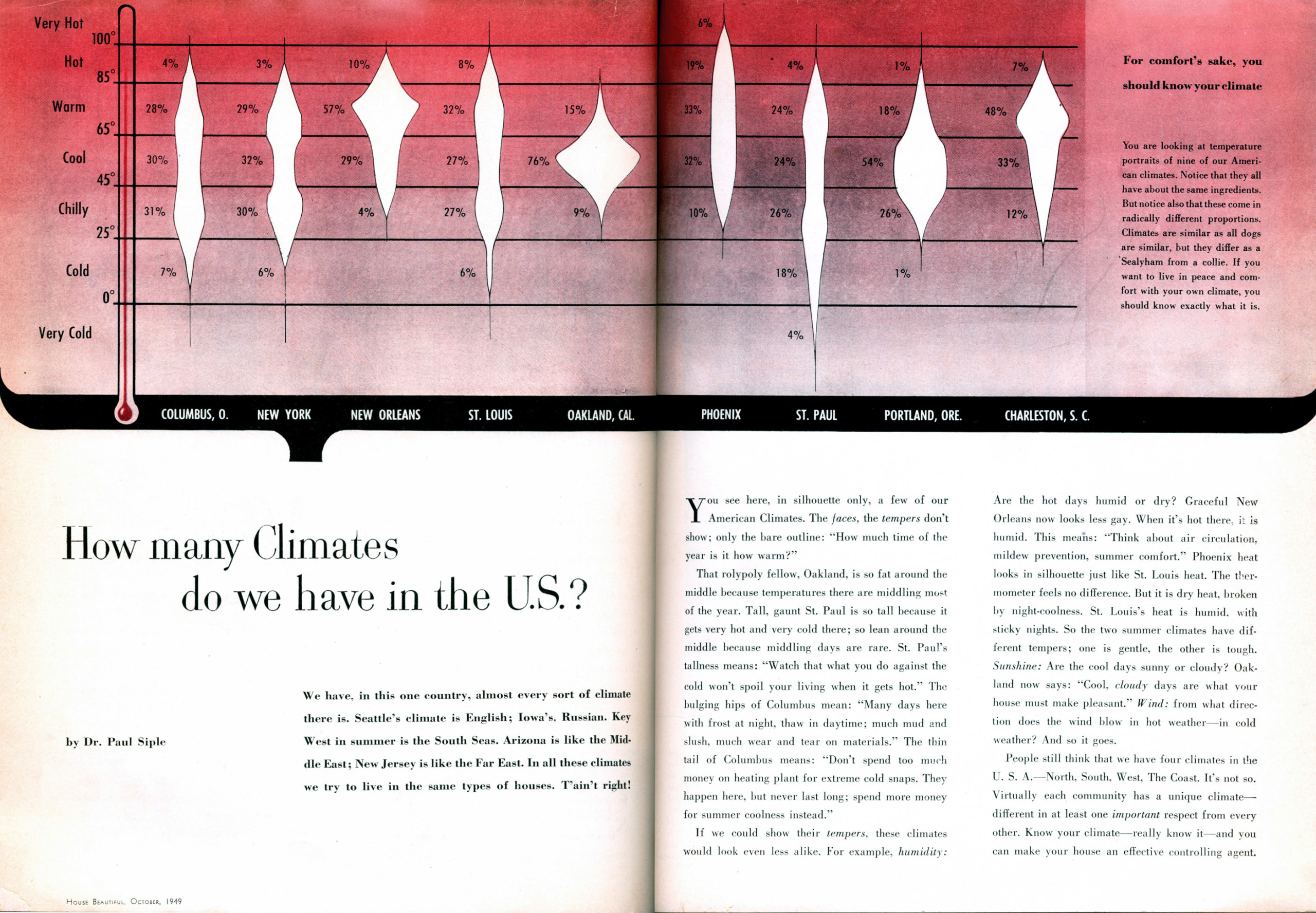
Underlying Modern Architecture and Climate is a distinct tension. On the one hand, these architectural solutions to climate control, born from interwar and postwar moments when the belief in the power of architectural design to change lives was at its height, offer us alternative solutions and histories to the carbon-intensive, air-conditioned era that was to follow. In the brises-soleils, louver shades, microclimate diagrams, and adaptive climate design methodologies that proliferate in Barber’s monograph, we can find inspiration in a contested past that lends historical credence to contemporary practices even as it offers a glimmer of a radically different future. The latter was clearly a missed opportunity, whose success in the fight for architectural hegemony would have profoundly changed the world and modes of inhabitation in ways dizzying and despair-inducing to comprehend.
Meanwhile, by the time my modernist apartment building was built in 1966, the prospect of an architectural solution to climate control was fading fast, kept alive only by white lab coat researchers and hippie modernists, neither of whom were given a second thought by my building’s developer. So quick was the transition between climate modernism and the Great Acceleration that the former has become the subject of specialty books printed by architectural presses while the latter has become a reality of everyday life and an uncertain future. The architecture’s form and architects’ desire to be form makers above all else soon reified climatically horrible buildings like the Seagram Building to the status of legendary innovations and cheerily handed over the reins of climate control to HVAC engineers so that the pursuit of form could be continued unabated during the postmodern turn.
In many respects, it was a future that we let happen. Yet, as Barber’s historiography makes clear, this fate was not brought about by the personal failings of individuals. In his account, the scientists, architects, and educators at the forefront of climate modernism are neither misunderstood vanguards nor futuristic harbingers of a new age of building, but rather subjects of forces far larger than themselves—political conservatism, libidinous consumption, neocolonialism, Cold War intrigue. Climate modernism, despite its sensitive foresight, cannot be excluded from the complicated legacy of modernism writ large. We have to contend with that greater project’s precepts—chief among them, the pursuit of a universal, mechanically cooled comfort above all else—if we are going to halt the ecological crisis unfolding around us. The lesson from Barber’s book is not to replicate the conditions that begat yesterday’s missed opportunities, but to change them for the better.
Kate Wagner is an architecture critic and the creator of the blog McMansion Hell. Her column America By Design can be found in the New Republic.








